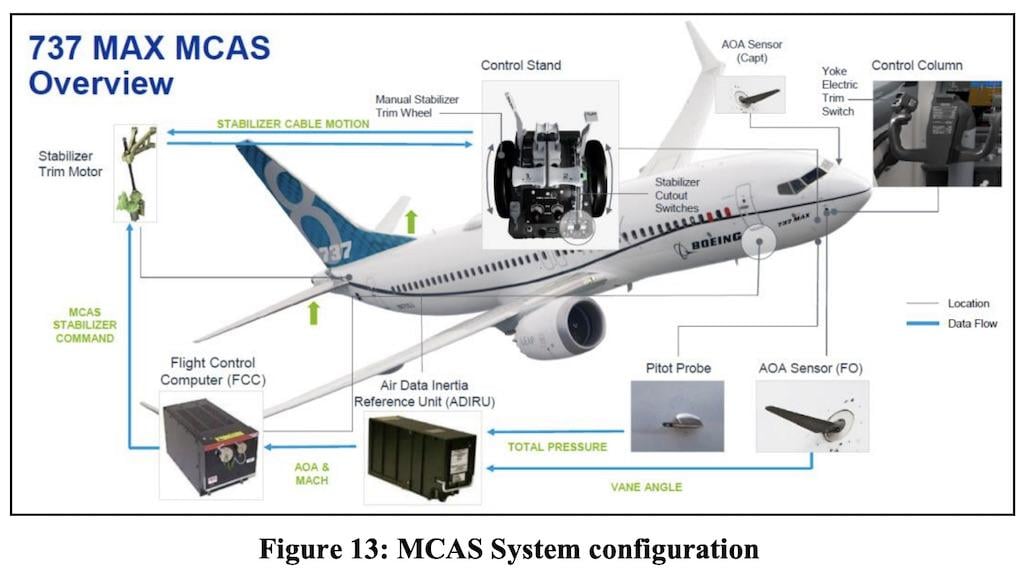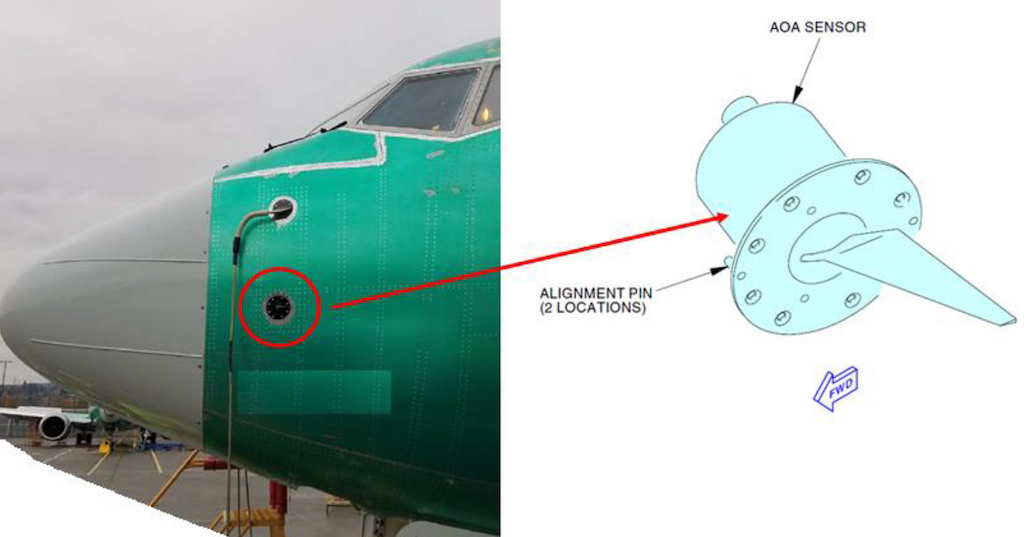
In October 2018 a Lion Air Boeing 737 MAX 8 crashed, killing all 189 persons on board, causing much of the aviation world to suspect pilot error or, more charitably, poor pilot training.
Five months later, it happened again to the same aircraft type flown by Ethiopian Airlines, this time killing all 157 on board. Examining the cockpit voice and flight data recorders made it clear that the aircraft was forcing the nose down and the pilots were trying and failing to prevent that. The aircraft was grounded by the FAA for two years in the U.S. and the acronym MCAS became infamous in the aviation world.
Boeing’s current website tells us that the Maneuvering Characteristics Augmentation System (MCAS) was designed and certified for the 737 MAX “to enhance the pitch stability of the airplane—so that it feels and flies like other 737s.” MCAS is designed, the page tells us, “to activate in manual flight, with the airplane’s flaps up, at an elevated Angle of Attack (AOA).” Most telling: “Boeing has developed an MCAS software update to provide additional layers of protection if the AOA sensors provide erroneous data.” Among the additional layers: “Flight control system will now compare inputs from both AOA sensors.”
Angle of Attack Option

If you are wondering what kind of money savings were made by installing two AOA sensors but only using one at a time, you are not alone. Boeing offered an AOA indicator for the primary flight display (PFD) which would also provide an “AOA DISAGREE” message in the case of an AOA disagreement from the two sensors. In my opinion, since the added AOA indicator was written with software and didn’t involve added hardware, it was a way to generate increased revenue by making it an option and not standard equipment.
It’s clear now the MCAS system was designed to avoid the time and expense of certifying a new aircraft type while enticing airlines to buy it and immediately fly it using their already typed 737 pilots. Pilot training for MCAS differences was nothing more than a few paragraphs in the manual and discussions in class; at one airline it was a one-hour course on an iPad. An errant MCAS activation, it was argued, was so much like a runaway pitch trim—when the stabilizer trims the aircraft’s pitch nose down on its own, something that could happen on the earliest 737s—that runaway pitch trim training would suffice.
Because Lion Air didn’t pay for the additional AOA indicator, its pilots would not have received the AOA DISAGREE warning when an open circuit in one of their AOA sensors failed and caused the MCAS to activate. The pilots made a few mistakes and should have been able to deal with the MCAS problem using runaway pitch trim procedures. But the airline is said to have taken shortcuts in training too. Journalist and pilot William Langeweishe was told, “In Indonesian simulators, there are sometimes seven in there: two pilots flying, one instructing and four others standing up and logging time.”
As if the story behind MCAS isn’t tangled enough, one has to wonder how the changes to the 737 type got certified in the first place. Under rules present at the time of the 737 MAX’s certification, a program called Organization Designation Authorization allowed the FAA to supplement its staff with employees provided by the manufacturer. The FAA saved the funds required to train and maintain the needed expertise to properly oversee Boeing.
It appears that the initial cadre of Boeing 737 MAX crews were lab rats being studied by Boeing. “I wonder how far back we can pare safety systems and training?” The Indonesian pilots were lab rats for study of their airlines. “Let’s see how many shortcuts in training we can take.” The crews and the public at large were lab rats under the duty and care of the FAA. The reasoning may have been,“if we allow the fox to supervise the hen house, we can get our jobs done with less cost and effort.”
Lab Rat Survival Techniques
My friend who refused the Midway Airport sidestep admits that he once accepted the sidestep and that taught him that going around was preferable to what happened when he had to salvage the unstable approach. I only found the backbone to refuse the illegal duty day scenario after sheepishly accepting the schedule without complaint.
In all these situations, the best way to understand you are being asked to become a lab rat is to know the history of the many lab rats who have preceded you. What can happen following a last minute sidestep? How has crew fatigue turned a long duty day into an even longer accident investigation? What are the weaknesses of any brand-new aircraft systems in your aircraft?
The solution for these lab rat experiments is to let the people in the lab coats know that their test results are available without the risk and that the high cost of failure makes the experiment foolhardy. For example, you don’t have to weigh the pros and cons of pushing your pilots beyond duty limits if you understand alternatives are available and the extra costs are insignificant compared to losing the aircraft and all onboard.
As pilots, the best defense is a two-part strategy: (1) understand accident histories of similar aircraft and operations, and (2) understand your aircraft procedures thoroughly. Step 1 will help you to avoid becoming a lab rat. Step 2 can save you when step 1 fails.
(Don’t Be A) Lab Rat, Part 1: https://aviationweek.com/business-aviation/safety-ops-regulation/dont-b…





